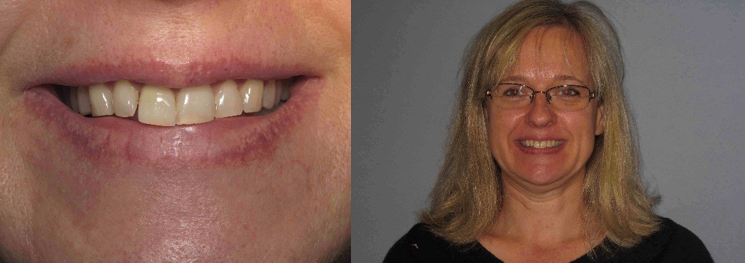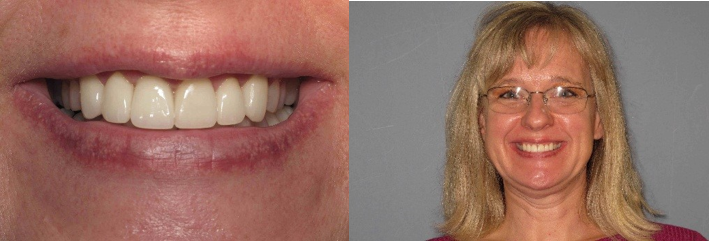By: Dr. Elizabeth Eggert
How did this start?
Ruth came to us as a new patient. She was experiencing frequent headaches, 3-4 times per week or more, as well as frequent neck aches, shoulder pain, back pain, and migraines. In addition, she had ear pain, jaw pain, and was having a hard time sleeping. Ruth was working with her MD to determine a diagnosis and treatment plan to help her manage the pain, which her MD thought was because of a possible pinched nerve. She struggled with the headaches and migraines for years but was now experiencing increasing jaw pain. Dr. Elizabeth noted some tooth wear throughout her mouth and intense muscle discomfort during her muscle evaluation. Dr. Elizabeth recommended Ruth go through our records process so that she could delve deeper into the underlying causes of her pain.
What did Ruth want?
Ruth struggled with upper back, shoulder, head, jaw, and neck pain for years but she didn’t realize the pain could be related to her teeth. Ruth had, however, noticed some changes with her teeth including a space opening up and a loose front lateral tooth. Ruth decided to undergo records because she wanted to be able to eat without worry, she wanted her mouth to function better, and she wanted her teeth to last her lifetime. She also noticed herself clenching often and she was hoping to have that addressed during the process.

What was revealed during the records process?
Dr. Elizabeth used models, photos, and x-rays of Ruth’s teeth along with our thorough muscle and joint evaluation results to present Ruth with the current status of her teeth, gums, and the function of her jaw and muscles. The details of the records process revealed that the position of Ruth’s teeth, muscles, and jaw joints were causing multiple interferences. This means she was biting down unevenly causing the breakdown of her teeth as well as the jaw, neck, and shoulder pain. It was recommended that Ruth begin splint therapy.
What was involved?
The purpose of her splint therapy was to change the position of Ruth’s jaw to a relaxed muscle position. We were hoping this would improve her headaches and migraines and it did! In Ruth’s case, we also discussed how if we adjusted the teeth to fit together at the relaxed jaw position, she should be much more stable long-term. Dr. Elizabeth fitted Ruth with a TMJ splint to wear all of the time to create the best possible function between the natural position of her jaw, muscles, and her teeth as they worked with one another.
As soon as Ruth’s muscles reached a comfortable and relaxed position, Dr. Elizabeth adjusted the alignment of the upper and lower teeth and altered the chewing surfaces of some of the her back teeth to remove the painful interferences. This process is called equilibration. Dr. Elizabeth then completed a solid new bite for Ruth with porcelain veneers and crowns on her upper and lower front teeth. The veneers were an important step in completing Ruth’s new bite because the ideal shape of the teeth helps to keep the back teeth from over engaging her muscles. This created harmony among Ruth’s jaw joints, muscles, and teeth as the joints and muscles were placed in a relaxed position and the teeth now come together at the same time. We finally designed a splint for Ruth to wear while she sleeps to keep her teeth, jaw, and muscles in this new comfortable position.
What does Ruth think?
“The presentation was really thorough and really good. I had no idea my migraines were caused by my bite. I got relief from my migraines in the early stages which was fantastic! I’m really happy. Everything was explained very well to me. I would recommend anyone experiencing my pain to come here. I would tell them to definitely pursue the treatment because you don’t have to live with the pain. It is also so nice to have everything looking great!”
Do you wonder if improving your bite may give you relief from headaches, migraines, or even back pain? Call today for an appointment at Eggert Family Dentistry 651-482-8412.


